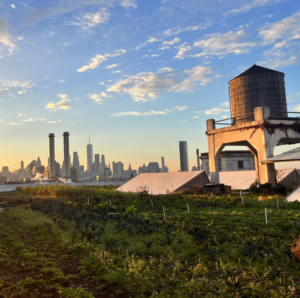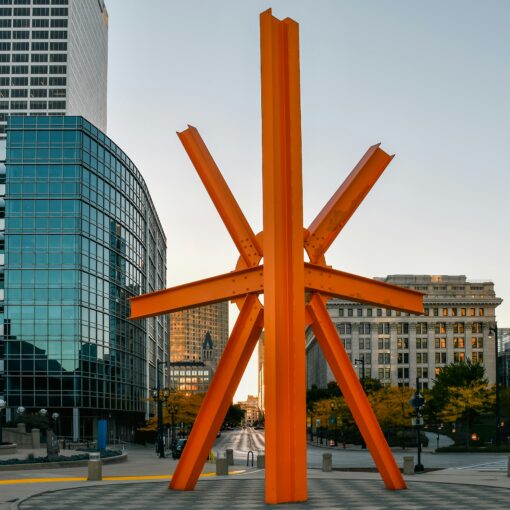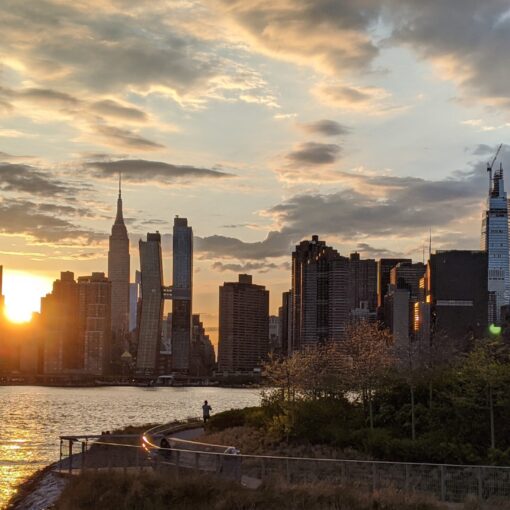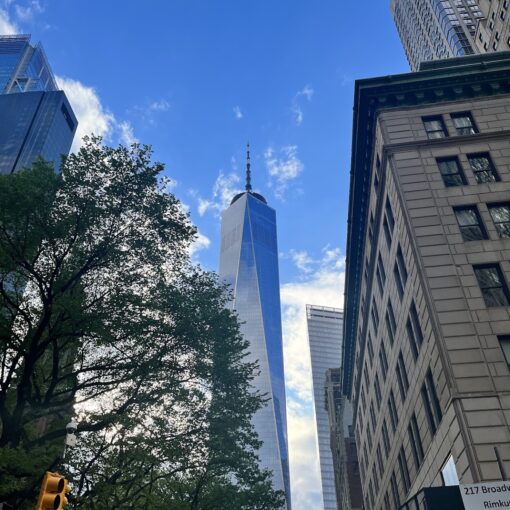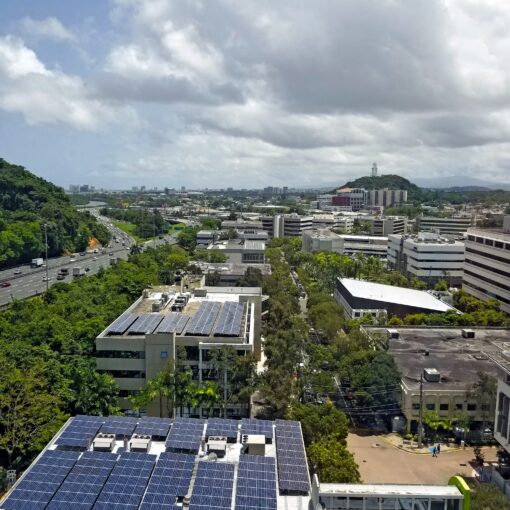On June 20th, 2024, the Sabin Center filed an amicus brief in support of the City of New York’s Motion for Leave to Appeal to the New York State Court of Appeals in Glen Oaks Village Owners, Inc., et al. v. City of New York. Glen Oaks – a 2022 lawsuit brought by a group of cooperative apartment owners – sought to invalidate Local Law 97 of 2019, New York City’s building performance standard aimed at reducing greenhouse gas (GHG) emissions from the City’s largest buildings. Buildings in New York City account for approximately two-thirds of the City’s GHG emissions, and Local Law 97 requires many building owners to progressively reduce their GHG emissions beginning this year. Our brief speaks in particular to the important role that local governments play in reducing GHG emissions statewide, and the chilling effect that a lack of certainty about preemption by the State’s 2019 Climate Leadership and Community Protection Act, or CLCPA, could have on their ability to pass ambitious laws to address climate change.
To recap, the plaintiffs in Glen Oaks made five claims in seeking to invalidate Local Law 97, including an assertion that Local Law 97 should be held preempted by the CLCPA. In October 2023, the New York State Supreme Court for New York County rejected all of plaintiff’s claims and dismissed the case. In particular, the court noted with respect to the preemption arguments that that plaintiffs had “not identified an inconsistency [between Local Law 97 and the CLPCA] on which to base an inference of preemption.” In other words, the court viewed the analysis of CLCPA preemption as a question of conflict preemption (i.e., when a state and local law are inconsistent with one another) rather than field preemption (i.e., when the state legislature has expressly or impliedly regulated so comprehensively within an area that local laws cannot regulate on the same subject). In using a conflict preemption analysis, the Supreme Court settled, at the time, that local climate laws are not preempted by the CLCPA absent an inconsistency that would give rise to conflict preemption.
However, on May 16, 2024, the New York State First Department, Appellate Division issued a decision that reopened the matter. While the First Department upheld the Supreme Court’s dismissal of four of the five of the plaintiffs’ claims, it ordered further consideration of the plaintiffs’ preemption claim – particularly to perform a field preemption analysis. In reversing the Supreme Court’s dismissal of the preemption claim, the First Department determined that “one could conclude” that the CLCPA preempts the field of greenhouse gas regulation such that the CLCPA would supersede Local Law 97 and, importantly, other municipal ordinances across New York State aimed at reducing greenhouse gas emissions. The First Department stopped short of ruling on the preemption question, instead remanding it to the lower court.
In response, the City filed a Motion for Leave to Appeal to the New York State Court of Appeals. The motion, if granted, would allow the field preemption question to avoid remand to the lower court and go straight to the Court of Appeals. When motions for leave to appeal are granted, it’s generally because the case involves novel legal issues of public importance, a conflict among two or more decisions, or a particularly complex legal issue. City of New York v. 2305-07 Third Ave., LLC, 35 N.Y.S.3d 69 (1st Dep’t 2016) (referencing the N.Y. Comp. Codes R. & Regs. tit. 22, § 500.22). In submitting an amicus brief, the Sabin Center argued that the issue of field preemption presented in this case presents a “novel legal question” that “occupies the highest echelon of public importance” due to the chilling effect the legal uncertainty could have on local climate lawmaking.
The Amicus Brief
Our amicus brief argues that the question of whether the CLCPA field preempts Local Law 97 is one of tremendous public importance because it necessarily implicates whether any local government in New York has the authority to enact ordinances to reduce GHG emissions. The CLCPA has been hailed as a landmark national climate law, enacting the “country’s most ambitious climate targets.” New York State has maintained that the CLCPA was not intended to chill climate action at the local level, but was designed to encourage and complement local action. As the Supreme Court noted in its decision upholding Local Law 97, the state has “repeatedly expressed its desire and intent to collaborate with the City and other local governments to abate GHG emissions.” Governor Kathy Hochul recently announced newly certified “Climate Smart Communities,” emphasizing that “New York State cannot tackle the climate crisis on its own…we applaud [] local governments for standing with us and taking action to reduce emissions.”
Beyond this, cities are key players in the state’s climate plans. The CLCPA’s Final Scoping Plan – a plan that details how the state will reach the CLCPA’s targets – includes an entire chapter on the importance of local governments in meeting the requirements of the CLCPA, noting that they “have an important role to play in meeting Climate Act mandates” by “enact[ing] codes, develop[ing] projects, adopt[ing] policies, and regulat[ing] land use.” More specifically, the Final Scoping Plan states that “compliance standards” for energy efficiency performance standards for larger buildings should “align with [] Local Law 97.” The First Department’s decision calls into question the complementary relationship between the CLCPA, Local Law 97, and other municipal climate laws and policies across the State.
Adding to the novelty and clear importance of the question presented is its urgency. New Yorkers across the State feel the impacts of climate change now. According to the New York State Department of Environmental Conservation, New York communities along the Great Lakes stand to see more inland flooding, while municipalities on Long Island and adjacent to the lower Hudson River Valley now experience “worsening flooding, erosion, and storm surge.” Extreme heat, too, is on the rise, with Albany experiencing 22 more “risky heat days” (defined as “above the 90th temperature percentile”) in 2022 than in 1970 (Binghamton, Buffalo, Elmira, New York City, Rochester, Syracuse, Utica and Watertown each experienced between nine and nineteen more). Data shared by the New York State Department of Health projects increasing temperatures over the coming decades, with average summertime temperatures rising between four and ten degrees Fahrenheit (2.2 to 5.6°C) in New York State. Risks associated with extreme heat are especially pronounced in urban areas across the state, where communities with dense populations, large buildings, and significant paved areas experience daytime temperatures significantly higher than in less dense areas.
More optimistically, the 2022 U.S. Inflation Reduction Act presents an opportunity for municipalities to pair local climate action with federal funding, but this funding is only available for the next eight or so years, with much of it spent much sooner than that. Key IRA programs like the Climate Pollution Reduction Grants have already funded local climate action planning in the Albany-Schenectady-Troy, Rochester, New York-Newark-Jersey City, and Buffalo-Cheektowaga regions. Each of these plans contains objectives, strategies, and measures to curtail GHG emissions in the coming years. Meanwhile, a tax mechanism that allows local governments to collect tax credit amounts in cash expires at the end of 2032. Leveraging IRA funding to implement local climate action presents an unprecedented opportunity for localities to rapidly reduce emissions, and they must do so as soon as possible.
Until there is a final decision on the question of CLCPA preemption, we risk a chilling effect on local climate action in New York, as municipalities considering enacting decarbonization laws that leverage IRA funding may decide not to do so due to legal uncertainty. The State may also delay – on the basis of this case’s open legal questions – filling the gap in climate action that would arise if field preemption were found. Local governments must gain clarity as soon as possible as to which levels of government possess authority (and therefore the responsibility) to enact and implement emissions reductions laws.
For these reasons we urged the Court to grant New York City’s motion for leave to appeal to the Court of Appeals. Resolving the question of whether the CLCPA preempts Local Law 97 is significant not only in New York City – where Local Law 97 implementation is under way – but also in municipalities around the state looking to enact ambitious local climate policies.
The amicus brief is available here.

